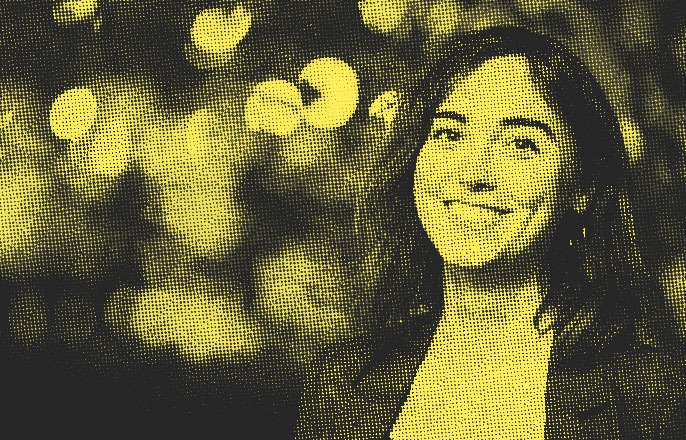
Interview with Agathe Mametz, Activist and Product designer
- Designer, Interview, Interview a designer
Hi Agathe, can you present yourself?
My name is Agathe Mametz. I am an activist designer and I am working with the French political party “La France Insoumise” since Autumn 2020. My work is to develop the platform ActionPopulaire.fr for the next presidential campaign of Jean-Luc Mélenchon (note: interview done prior the elections). It’s a social media platform that enables the “Insoumis” (note: name of the party’s activists) to organise their own local actions such as leafleting, canvassing, discussing about the programme, etc.
Before that, in 2017, my first working experience was with FoodChéri: a food delivery startup which is, compared to Uber Eats or Deliveroo, more like a full-stack restaurant employing the delivery people. With this team, I also helped to create Seazon: a subscription-based home delivery service that has the added value to deliver food all over France and not just in big towns. I was there at the very beginning of this project with my Head of product and that’s when I really learnt about product design (note: as in digital product).
I graduated from Kedge Design School, in the South of France. There, I learnt to be a versatile designer: to adapt my skills to projects, to quickly prototype, and to test solutions.
I am also an activist. I created the online platform WikiTrans.co because I am a transgender woman. Because I don’t want it to be the main focus of my personal identity, I only say it at the end. I created this platform because, during my personal journey, I asked myself a lot of questions and the only answers available were online and in English. My goal is to support the future French-speaking gender questioning people.
I am also part of the collective “Toutes Des Femmes” (note: “We are all women”) which is a group made of cis women and trans women. In May 2021, we published in the French newspaper “Libération” a position paper about “the place of trans women in the feminist movement”. It was a reply to an attack made by a few feminists, close to far-rights ideas, saying that trans women shouldn’t be allowed in the feminist fight because they are dangerously seizing the visibility of the feminist movement and women’s rights. This collective’s campaign allowed to publicly point out this far-right rhetoric and resulted in a consensus inside the French feminism movement.
This year, I started to create video games during Game Jams which I enjoy a lot. Imagine, about 4.000 games created in 48 hours. During our last one, we scored 1st on the Theme and 21st on Artistic Direction. Now, I am also working on my first real video game, called “Stronger together”, which would be an activist game based on a simple runner game.
Could you tell us what was your journey as an activist designer?
Before beginning as an activist designer, there is the need to realise, as a citizen and human being, that there are struggles and fights around you.
Personally, I was introduced to feminism, inequalities and struggles about 10 years ago on Twitter. A classic way to find out about them is through large campaigns such as “Me Too”, “Anonymous”, or “Black Live Matters” movements. Indeed, having the will to act to improve our society means understanding that our society isn’t perfect. It’s not something that you can learn at school: you learn history but you never learn to become a changemaker of this history.
Likewise, when you’re in a design school, you learn to solve problems to make money but to be an activist designer isn’t the same: you’re solving societal challenges because they are important to you.
To realise that society is not fair is a great first step.
From then on, you start to learn. Because, once you discover this, you can’t step back. It’s a bit like the red pill in The Matrix: your worldview changes forever. You start to learn about the different feminist movements. You learn that it’s very connected with racism struggles, with validism, with lesbianophoby, etc.
And at one point, you realise that you have acquired enough knowledge to speak out. I don’t mean leading international research conferences but rather calling out bad behaviours from a colleague; raising awareness to your friends and family; promoting web-content accessibility guidelines to your company; pro-actively not asking for gender on your online form to avoid potential harm to your users; etc.
Being an activist doesn’t need to be about radical actions. A lot of people don’t call themselves activists because they see activists as being “loud speakers during protests”, advocacy leaders writing books, or because they are waiting for peer validation. But activism can include a wide variety of allies, both vocal and less vocal. An ally is someone not directly affected by a struggle but still supportive to the community and its fights.
I would say that people making a step towards our communities, doing their research, and taking all these tiny actions to reduce inequalities are activists because they don’t do it for themselves, they do it to improve society.
Once you have the information, the question is: “are you going further in this journey?”.
When it comes to creating content, there are generally two types of people:
– People “re-vulgarising” existing content. It’s their way to be activist and, in a way, it’s great because repeating is a good way to learn. But, in 2022, it’s often not working out so well as a project because there are millions of similar blogs and Instagram profiles.
– And people creating new knowledge such as books, podcasts, interviews, and sometimes, becoming leading voices.
In my community, that’s mainly how you commit if you want to compare it to humanitarian aid where “committing” might mean to travel abroad on missions. Here, activism is a progressive journey that has no clear beginning and ending.
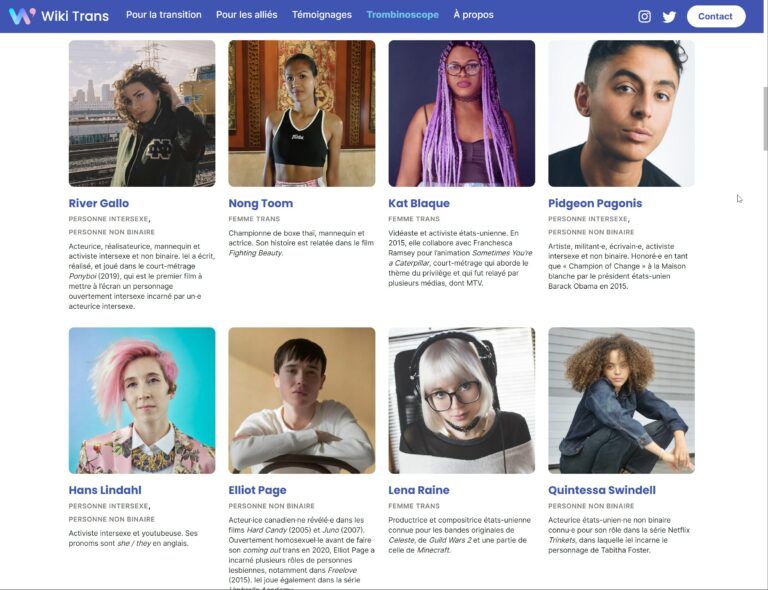
If it's a progressive journey, was there a shift from being an activist citizen to being an activist designer? How did you become an activist designer?
I never had big plans to create Wiki Trans, it all came naturally. At the beginning, it was a very low commitment: I was just replying to questions on an online chat. I realised that I was often replying to the same questions so, one day, I started gathering my answers on a website to ease the process. Little by little, I improved the website and the content to arrive at this result today.
For me, it first started as an individual. Then, there was a moment when I realised that many activists were answering questions but not everybody could create an online platform. That’s how I started to use my design skills for the fights that matter to me.
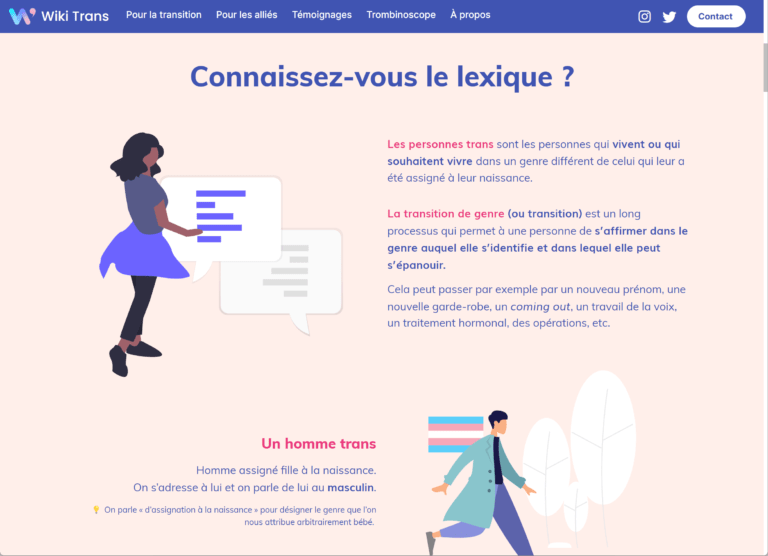
Can you tell us a bit more about how this progressive journey started for you?
When you are starting, you want to learn so I read a lot of online blogs about feminism and threads on Twitter.
I also searched for associations and activities. I did go to one or two “auto-support” events but the truth is that I was quite afraid of associations.
It relates to being afraid to call yourself an activist. Some sort of gatekeeping, sometimes involuntarily, where you don’t feel legitimate to join an association; sit down in a General Assembly; listen to what is being said simply because you have the right to be there; and potentially raise your voice to discuss the agenda of the meeting. It was very difficult because I couldn’t envision yet what it could bring to me.
With experience, I can now say that it could have brought me so many things, and I should have done it more often. But, I think it’s also about being trans: I had the feeling of not being legitimate within some communities. Gatekeeping can be very strong for individuals willing to join associations. And often, associations are not making any efforts to make themselves accessible: they tend to have a very bad website and their communication for an event might just mention a date and a location with no further explanations. There is no sort of inclusive and reassuring onboarding or someone available that could answer all your questions prior to the event.
So the only way I had to start getting information was the internet and media: websites, social media, Discord, blogs, podcasts, videos, books, movies, and that’s how I trained myself. Then, to extend this knowledge a bit further, I went to conferences about feminism, materialism, trans identity, etc. When you are on an activist journey, you will always be seeking for more information and asking more questions. When you truly start to assimilate the idea of inequalities, your brain will start to realise that its previous thoughts and assumptions were wrong. And that’s why we use the word “to deconstruct”.
For example, it’s very common that activists raise their voice on Twitter but there is no filter there. You often end up saying things that you wouldn’t say in real life. And people don’t mind calling you out harshly or just unfollowing you as soon as you make a tiny mistake. You learn through your mistakes. And sometimes, these mistakes lead to nice one-on-one conversations where experienced activists take the time to explain to you in detail why what you said was wrong.
And that’s one key takeaway: in activist communities, knowledge isn’t vertical, it’s rather horizontal and organic.
In these communities, we often talk about "inclusive and considerate communication" (from French "communication inclusive et bienveillante"). Do you feel that this is happening online? (note: Agathe is laughing)... How, then, can you manage as a designer to create inclusive online platforms?
About knowledge deconstruction, there are two kinds of reactions:
– people who want to be trained: generally younger people that are directly concerned by the struggle or their allies. They always stay in a state of mind that allows them to learn.
– people who really couldn’t care less about changing their status-quo: you cannot really connect with them by using the same tools and arguments. For example, if you want to talk about feminism to your grand-parents or your flirty colleague, you cannot send them a link to an article about feminism.
As a designer, we know how to use the right tone based on a defined user because we learn to meet and understand our users, answer their needs, select the right medium, and create accessible interfaces. Our power here, as a designer, is to bridge the gap and convince non-allies.
One of the great powers of Wiki Trans is that our discourse, our tone, is very consensual: nobody can hate Wiki Trans because we are intentionally not saying anything that might upset trans people. It’s not that common. A lot of trans organisations hate each other because nuances in values and discourses can quickly segment groups.
But that’s also why parents like us so much. The brochure made for parents is probably the most powerful & downloaded document on the website.
When we worked on it, I didn’t just share everything I knew on the topic like an informational database. I took it as a real design challenge trying to understand my audience: what is their concern?
For example, a parent is confronted with the coming-out of their children. It’s understandable that it can be disturbing. So they call their friends to know what they think about it; or they write “transsexual” on their web browser and find some sort of old travesties clichés on a newspapers article or on Doctissimo.
How can they be reassured? Our first answer was to produce a physical object that they could hold in their hand because people don’t click on links; it’s easier to print and put on a table; and it looks more official.
Once the medium was defined, I listed all the questions that parents asked and sometimes reframed them to deconstruct their misconceptions.
This brochure got a lot of very positive feedback and a great ranking (note: readers can rank content). I also have digital tools to measure when people are talking about the Wiki Trans. Quite often, it’s a person sending the brochure to someone asking for advice about their coming out.
Coming out is a very critical moment. And the brochure is doing its work in teaching people that may not be eager to learn. So, the designer’s work is quite an important work.
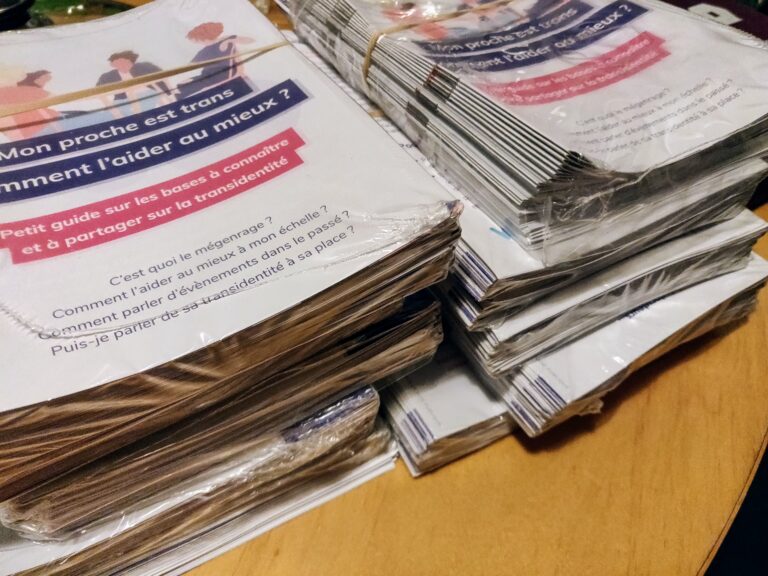
Have you talked with parents? Are you using other metrics to gain these precious insights?
For parents, it’s quite simple. You go on any online forum and you write “I’m a parent and […]”. You’ll quickly get to all the questions from panicked parents. On forums, you also have all the teenagers complaining that their parents are not understanding their concerns.
We also took all the questions sent by parents to our email before the brochure was launched. It was very insightful because, when they want to learn, they are pretty direct with their questions. And, the fact they contacted the Wiki Trans means they are already in a learning stance. After the brochure was out, we still got a few emails saying “it’s great but you’re missing this question”. We completed the brochure and, now, we aren’t receiving much more emails from parents.
And of course, we also have our personal stories because in our team of 5, each one of us probably had to do 50 coming outs, so you know which answers regularly come up. If it wasn’t part of my story, I would of course go and meet trans folks to gain more insights.
But parents aren’t really people you can interview to develop this product because you cannot tell them “how should I do the brochure to prove you’re wrong?”.
To answer your second question about using design to create inclusive & kind online platforms, I will tell you about our hormonal folder on the Wiki Trans. In the trans community, we have a big problem because we take treatments that can harm both physically and psychologically, cause medical complications, and even kill us if not done correctly. Also, we are medicated by doctors that are completely incompetent because they might only see one or two trans person in their whole professional career. That doesn’t motivate them to get education in that matter. The only few trained doctors are quickly booked with waiting lists that can go up to a year.
The problem is that knowledge on hormonal treatment is also very horizontal and organic. It’s fine when it comes to the history of feminism but it shouldn’t be the case for medications that can physically harm you for a missing comma on a dosage.
So we met Julie, a self-trained specialist working with a group of health professionals. I asked her to write everything she knew about these treatments and she delivered a 45-page Word document.
My role, as a designer, was to find the right user experience that would facilitate the research and reading of the content. Thus, removing the gatekeeping feeling because many people would be taken aback by the complex aspect and give up with the feeling that “they are not legitimate to read these documents”.
In the end, we created a real onboarding page explaining how to measure quantities; how to read your blood test; and how to find the right treatment.
We used emojis, you cannot be more accessible. We emphasised each content with a lot of references and links to be as transparent as possible and allow our audience to read as much as they want.
The impact was very important. Trans women were used to taking an antiandrogen called Androcur which was made of cyproterone acetate. It’s the same chemical component as “Diane 35”, a contraceptive pill that was forbidden in France a few years ago because it was too dangerous. But doctors continued to give it to patients transitioning to the point that up to 2018, Androcur was still one of the most used medication in France for trans women.
On Wiki Trans, we put a big red cross on it, and we put a big green thumbs up on a safer product called Bicalutamide.
Since then, there have been a lot more requests for Bicalutamide in France. There was a real difference, from 2018 to 2020, in our surroundings.
Of course self-medication isn’t the best solution. Let me be clear, it’s not our goal to push to self-medication but people are doing it anyhow. Therefore, our goal is to provide trustable information on the effects of each treatment. The best solution would probably involve the French government giving the right information to the practitioners or, even better, training them. Wiki Trans is only tackling this pitfall.
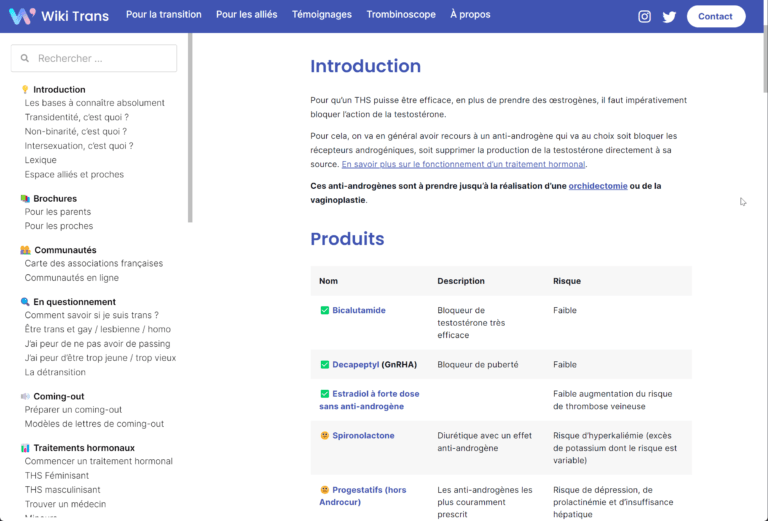
What is being an activist for you? Is it pushing the government to take action and replace the Wiki Trans with a similar yet official and nation-wide platform or is it to be against the government keeping a more activist ideology?
Both obviously. Our goal is to push our society in the right direction… and when it doesn’t happen or it isn’t quick enough, our role is to fill the gaps.
With FoodCheri, which is considered a corporate company, I worked on a project called “Eco-Score”. It is a similar version than the “Nutri-Score” (note: a label showing the nutritive value of food) but it measures the environmental impact of a product, including raw materials, manufacturing processes, transportation, and packaging. This initiative, launched by the app Yuka, came five years after the first governmental announcement of a similar project that never came up. Their initiative was a way to tell the government that they were too slow.
They made a partnership with Leclerc so that all their packaging would have the Eco score: they tested with people; checked the impact; and it showed that the Eco Score affected people’s decision to buy better products; and eventually pressured the government to move forward faster.
For example, the label was helping consumers realise that transportation is often over-considered in terms of negative impact. As an example, growing food in a warm climate is actually much less polluting than growing the same food in a local heated greenhouse half a year.
This project wasn’t about “being against the government”. There were several goals.
The first one was to move forward without waiting for the government because lobbyists do not want this Eco-Score to happen. They waited five years but we could as well have waited 50 years. At the beginning, their prototype was impossible for consumers to understand, there were categories in Joules.
Moving forward was also a way to say “we don’t need you, we will do it without you. And, if you want to regulate us, you will need to move faster”.
And finally a way to reassure them and prove that this initiative is worth a try. I can understand the politician’s fears to see their initiative failing; to turn their back to lobbyists; or to waste money and time on a useless project.
Even if tomorrow we had the best president ever, our militant work is to keep pushing. When Biden was elected, the first thing democrats said was “you aren’t fast enough to change things. Be faster. We are watching you”. Activists will not stop at first victory.
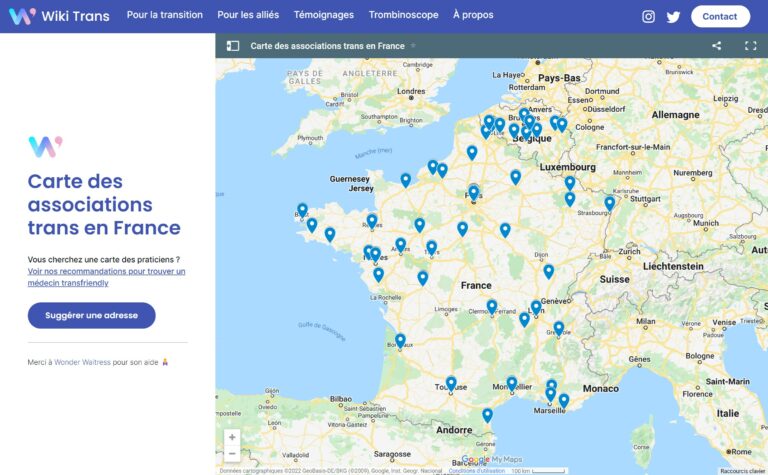
Should designers be agonists or antagonists? Agonists are people trying to involve all the necessary stakeholders in their project while antagonists people may refuse to work with certain stakeholders by lack of common vision or methods.
It depends on every project. For the project “We are all women”, our goal was to show a united movement. That’s why I put the 50 logos of the associations who signed the petition on the front page: to show that everyone was on the list…
I have another example with presidential campaigns such as the one with Mélenchon. There are political advocates that are trying everything to have a unified Left group. They try to associate Jadot with Mélenchon, even though one is clearly a “green capitalist” and the other one is campaigning for a real political ecological planning. It cannot work.
The agonist approach isn’t always possible, neither in politics, nor with activists associations. The visions and ideas are too strong, you must make a choice. It’s clearly a political decision too for the civil society.
For example, Wiki Trans is open to work with all the associations but we also have to make such decisions. For example, the government launched an open call for trans associations & collectives to join some sort of “jury” to decide whether or not a human being should be allowed to continue their medical/surgical journey in transitioning. We had to take a strong antagonist position: we launched a petition/manifesto to campaign against the government open call.
So it depends on your project.
So your values can give you good reasons to build barriers with some stakeholders but we also know the bad side of "bubbles". Are you still trying to empathise with or understand the "why" of an opposite perspective?
In France, we are used to compromise. For example, we have “the useful vote” (note: to vote for someone you don’t like to avoid fascists to get elected) and we have been used to it since our childhood. It’s often about compromises: there is no good or bad, just in-betweens.
Every year, the “Inter LGBT” organises the “Paris Pride”. The “Inter LGBT” is an association unifying a lot of pro-LGBT associations across the country but for the last few years, they are making more and more mistakes.
Recently, they invited police associations to have a float during the parade. This is bothering many people, including myself, because Prides were first created to denounce police attacks against black LGBT people. If LGBT police people want to join the parade, they don’t have to come as police officers, they are welcome as individuals but not with an official float. So, people were bothered but did compromise to stay united…
This year some associations created a counter-event. It was without the Inter LGBT and probably with a more radical and political vision but it was quite a success. I went to the Inter LGBT official Pride, as usual, but next year I will probably think twice about it.
As a designer, don’t be afraid to take on your legitimacy. Probably your inner voice says “you’re not legitimate, you don’t know enough” but in the activist sector there are very few designers. It’s actually the same in the open source community. Activists are crafting websites with their own skills, if they would see designers at their door, they would be so happy. People want designers. But they don’t know what designers are and what their job is about… The day you’ll arrive there, and you’ll say “hey [association], I can help you meet your audience, and create a stronger and better communication that is understood by everyone”. They will just reply: “please, sit down. Do you want a coffee?” because our profile is so rare in this sector.
When there are no designers, activists are just doing self-crafted websites. Resources are often lacking in grassroots organisations so activists are used to reuse, repair, share, tinker, etc. They just applied this habit to their new digital needs with the skills they had on hand. If their website is ugly, which doesn’t mean it’s not pragmatically functional, it’s only by lack of digital expertise.
On the other hand, they don’t feel legitimate to ask designers to work for them. They may think it will be too expensive for their structure or they don’t know how to approach us.
Find an association interesting to you. Send them an email. Find a way to connect with them. They will most certainly say yes.
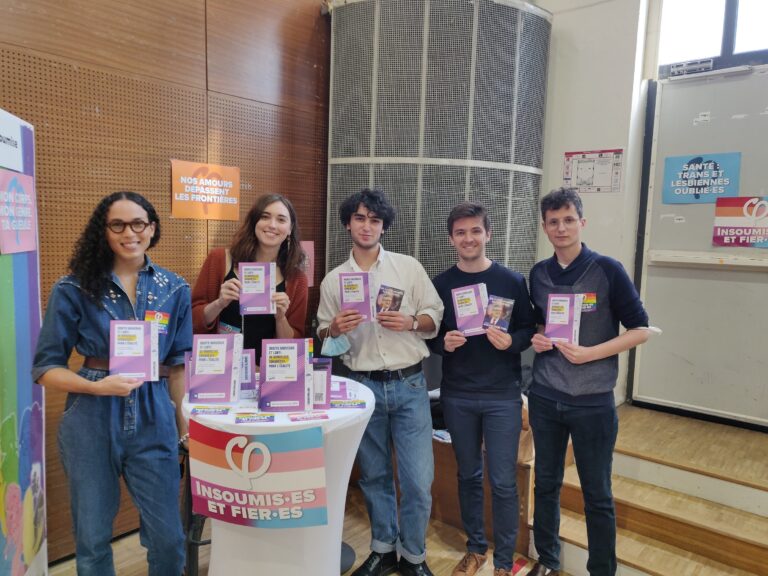
Do you feel that activist designers are mainly working on communication, graphic design, digital, and IT? For which reason? Do you know other design activists?
I may have a friend or two but it’s true that it’s very limited. Generally, they are working on their own, as freelancers or consultants.
Often, associations are looking for graphic designers rather than UX designers. I think that associations and designers are not meeting each other because they are not aware that the other side needs them. It may also be hard, at first, for a designer to join a tiny team because the designer’s tasks may be divided among several people. On the other hand, founders generally have a thorough idea of “how things must be done” so they may prefer to run these projects on their own.
We also see more and more associations stepping up their website by using WordPress and Elementor. They may hire a developer to create a working website but it’s different than working with a designer. A designer is able to redefine the complete brand identity and its communication channels, including the website, to be sure that it correctly answers the audience’s needs.
Do you think that some associations are more open to change than others?
When I worked for “Toutes des Femmes”, they were used to the DIY approach (note: Do It Yourself). They are very much far leftist. For them, having a designer was a luxury. They were more like “it’s okay, we will handle it, no worry”.
When I showed them the first drafts, they said “no. Your website looks like a startup”. So I had to question myself to really address their needs and values in a graphic way.
Does the graphical DIY website represent a certain mindset and identity?
While some brand identities won’t fit the values of an organisation, I don’t think that activists would consciously prefer to stick with a non-functional website just to keep a DIY look.
The DIY look is just dependent on the activist tasked to create the website and their potential lack of design skills. That person might prioritise functionality over aesthetics, and yet, the website might fit the community’s needs. That’s the most important. Wiki Trans is a DIY website built step by step with a prioritisation on users feedback.
A lot of associations have this DIY look and feel. It became one of the ways to recognise our allies, our communities, and to create a feeling of belonging. A skilled person, such as a designer, should be aware of these non-formulated requirements and build a website where the community would feel at home and enjoy sharing.
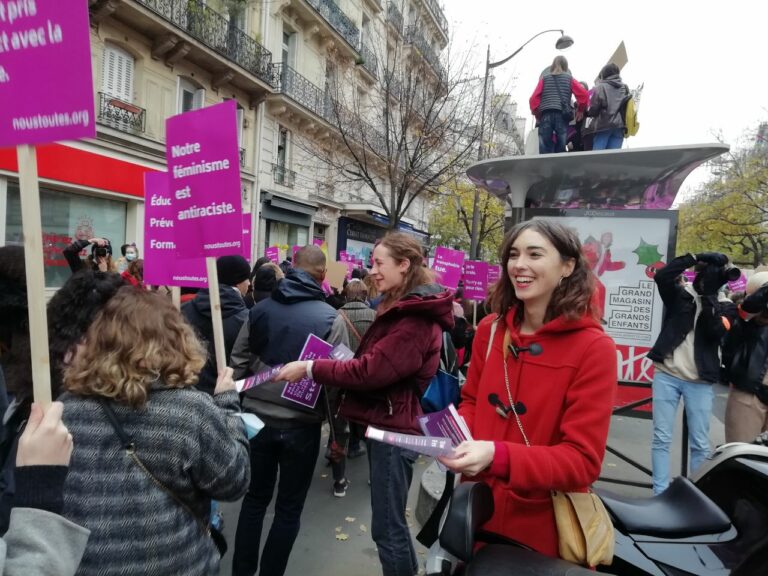
Is the short-term turnover of volunteers a problem knowing that, most of the time, designers need to go through analyses and ideation processes?
Designers are almost DIY masters so actually these projects are perfect for them. The goal of a designer is to adapt to the reality of the clients: the needs, the time, the constraints, the tools, the stakeholders, etc.
They also have the tools to prototype quick solutions; spot touchpoints and quickly incentivise actions on a website, etc. Therefore, they should be able to adapt.
But, the more you know about a project and the struggle you’re trying to challenge, the better you’ll handle that project. If you’re personally involved and oppressed by the struggle, you’ll be emotionally involved and therefore you’ll be better. Like on any other classic product: if you are a client of the product, it will be easier to relate to your users needs.
In such a context, awareness helps to have quick relevant ideas.
The job of the designer is also to meet the people, to ask the right questions and to define or redefine the brief: a website is not always a Carrousel header on top and social media buttons at the bottom. As a designer, I’ll break your assumptions and ask you “what is the purpose of the website?”. Only then, can we start building around this new idea.
You can read this in every single design article: designers must be involved from the beginning of the project.
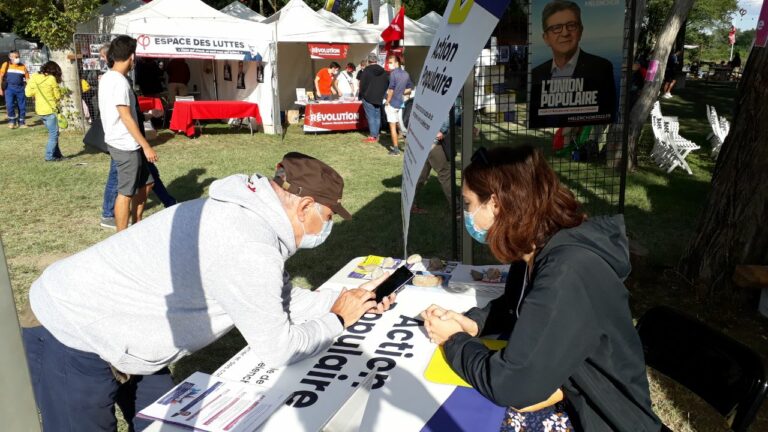
Have you ever needed to prove your added value as a designer to a client? Have you used metrics, and if yes, which ones?
Yes, I still have to do it but I’m lucky that I am working with teams that already understand the work that I do.
Though I may not have to explain my job, I still have to explain and argue on my decisions. I’m using tools such as heatmaps, contact forms, surveys, feedback, … What I quickly learnt as a product designer is to always implement a contact form as soon as possible. It’s the easiest way to be informed about a problem occuring on a platform.
Generally, if someone is not comfortable or doesn’t understand the platform, either they quickly leave it or they make that effort because they are interested. In any case, we always have a Contact button accessible to capture their feedback. On Wiki Trans, the largest button is for sure the contact button and also true on Action Populaire.
I use both qualitative and quantitative metrics to help me make decisions and share them with the team.
On Wiki Trans for example, I know that we had two million views in about two years. And, as a qualitative example, we published a large survey to ask our users about every aspect of their transition and asked for a verbatim to know if they liked the platform or not. We received a lot of love saying that the platform was very useful. This kind of survey is an important way to observe direct added value.
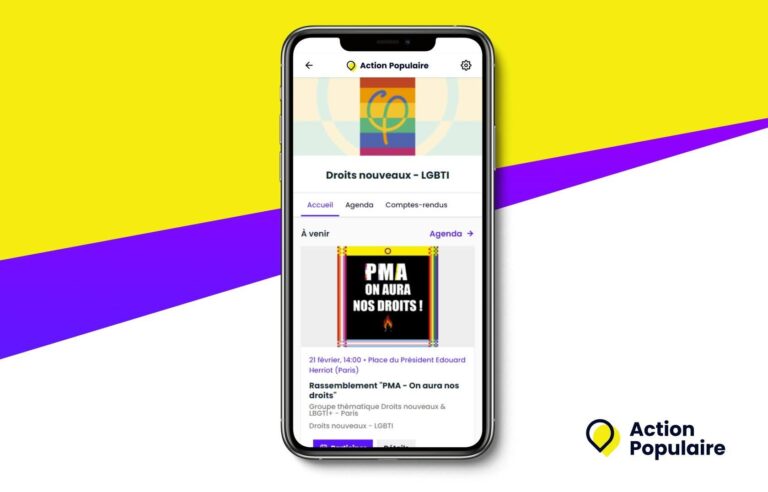
How do you see your future? Is your actual job enough to sustain a life in Paris? How do you handle your work-life and activist projects?
I really like to change often and learn new things. When I reach a moment where I’m getting bored at work, I have the will to change.
So, I think I will quickly switch to professions other than product design. I could take a year to develop my video game while getting unemployment aid or stop UI to focus on UX.
I’m actually working full-time in the political sector because I’m working for a presidential campaign during the day and volunteering during the evening. It’s quite an interesting routine because one is a job which I stop working on at the end of the day.
I may work home on rare occasions when there is a deadline like many of us but it’s not like a personal project where I could work non-stop on it.
Is this lifestyle good for me? I don’t know. This year yes, but I wouldn’t bet on doing this for 10 years. And, on the other hand, I don’t think I could ever go back full-time to work with a startup.
Right now, my dream would be to work on a militant ecommerce. A bit like Ulule, Utip, Leetchi or cagnotte.com. Because, in my previous job, I really enjoyed working on the idea of funnels and filters that are specific to ecommerce.
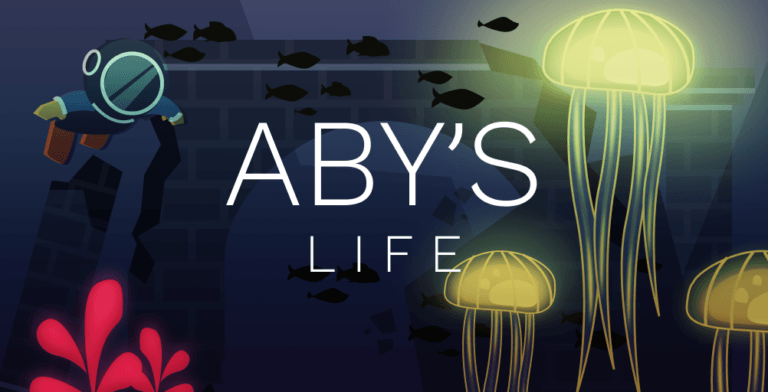
I often advise student designers to choose their battle and then join local targeted associations. You're active on different topics at the same time: is it feasible, is it relevant, is it interesting?
I have to say first that politics is the end of the river where all the streams are flowing: if you’re active in feminism, anti-racism, sanism, transphobia, … at some point, you’ll end up with the wish to go further. To give a simple example about feminism: at first, you’re like “okay there are about 50 feminicides in France every year” so you fight for the cause: you create boards, you go to protests, you defend your ideas online, you go to conferences, and you end up discussing about “how to convince people?”. But then, on the whole, people are convinced. So, you start to think on a broader scale: “we need more funds to support the women protection associations and we need to train police officers”… who decides that? The state. How do we convince the state? We need to have a head of state willing to take these actions. It quickly and logically comes down to politics.
In the end, doing politics and trans activism at the same time is just logic. Of course, I could decide to just support the communities by doing my work on my side but my goal isn’t here. My goal is that the work I’m doing becomes unnecessary because the government would be doing theirs properly.
Basically, I’m not trying to find short-term solutions. For example, an association acting as a refuge for the LGBTQI+ people that are being abused by their parents is doing important emergency work. But my goal is that these violences would be punished by the law; that parents get trained before having kids; that we learn at different levels of the society that being violent towards your children is not acceptable… to the point that the refuge wouldn’t be necessary anymore.
To bring this structural change in our society, you need a political change.
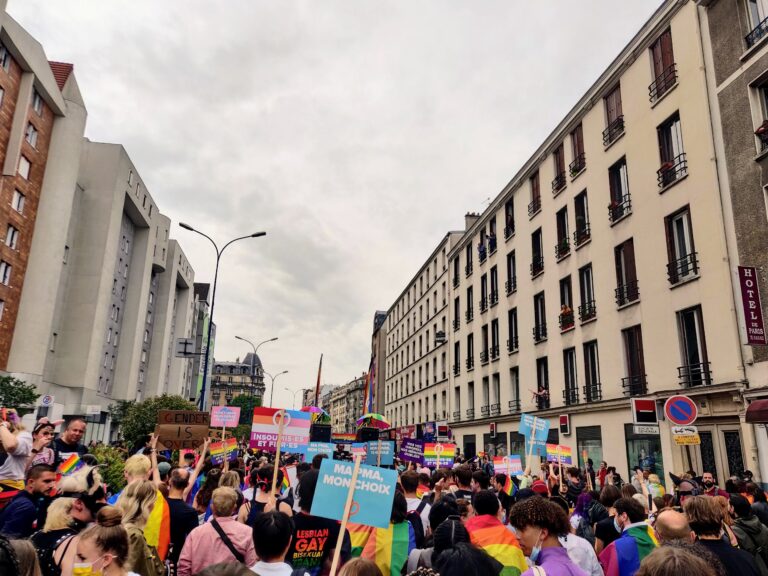
And you can see in Greece for example how the election of a politician can drastically restrict the action of activist movements by blocking funding; forbidding and criminalising NGOs; institutionalising fascists ideologies.
Yes, indeed. I’d be afraid for my colleagues working with anti-racism associations if the far-right parties would get elected.
And that’s also why I don’t understand people that are activists and won’t vote. People who are fighting for trans rights, and are also saying “I’m not voting because they are all corrupted or they won’t do enough”.
In the humanitarian sector, a lot of NGOs are claiming to be apolitical in order to be allowed by a potentially corrupted government to get inside the country and provide support to a population in need.
There is a difference between the convictions of an individual and the needs of an organisation. The Wiki trans as a platform is also apolitical. When I joined the team of Mélenchon, I made a post about it and I received a few emails asking me if Wiki Trans would become a promotional tool for the elections. Of course, I replied that it wouldn’t be the case and if, tomorrow, someone from the far-right requires help and information we will support that person. The apolitical approach allows us to answer to everyone because oppression is the same reality for everyone. And the status-quo and the need to deconstruct is also equal for everyone.
I would be glad to talk about your new work with La France Insoumise and specifically about the hiring process. How did it go? Was it your previous volunteering and activist work that got you this job?
Indeed, but I don’t want to push designers to do free work for clients and be exploited. On the other side, in the activist sector there is a notion of volunteering that is very encouraged.
That’s maybe a message: we are encouraging designers to not do free work. But if they still want to do some projects to practice or fill their portfolio, please, do it with associations.
Of course, my case study is a positive one and is, actually, common to all the employees from our team working on the digital tools for the campaign: my boss wanted to hire digital experts that weren’t graduated from the digital field. She believes that these profiles are doing their work with more passion and motivation.
What interested my manager about me was the process of the Wiki Trans. When I started the platform, I often published articles very quickly, even when they weren’t complete. It allowed me to share the evolution on my social media, explain my technical choices and get instant feedback from followers to improve the platform. I managed to explain this specific designer’s approach of building a functional and easy to use platform based on users’ feedback, and I got hired.
It’s an important point because it shows that I did promote and explain my work correctly. It wasn’t just about doing voluntary work: I used this work as a springboard to showcase my skills in my portfolio. A bit similar to these Youtube channels of developers coding live and explaining the process of their work. I like these videos a lot.
Is it a real strategic thinking to show your values as an activist to get hired in a job that reflects what you want to do and become?
Yes, I would advise young designers to showcase projects they would like to do and to get rid of the ones they actually wouldn’t like to do in their next job. I also really like people who are sharing their blogs online.
Whatever the medium, explaining your thoughts, ideas, or goals about topics that fascinate you, is often a good idea. It shows who you are much better than some portfolios. I’m also using Twitter to share my work in progress. It’s not where other designers may be, but I found a lot of my current clients on it.
I know during the previous election, La France Insoumise was very proactive in getting the voice of French citizens through participative workshops, etc. Did you learn anything as a designer by joining their methods and school of thoughts?
It’s true that I found them very mature in their co-design approach and especially their ability to (1) quickly navigate through information. You can’t imagine how many emails the contact mailbox is receiving every single day with people’s feedback and opinions. And we have to reply to all of them. And (2) they know how to keep a boat afloat and in the right direction: if the political program has been decided, then it’s important to stay focused on what has been decided. It sometimes requires being strict to avoid time of dispersal.
Something they may have learnt with me though are the co-design workshops and the user testing. For example, we send our newsletters to all our supporters so I suggested that it would be essential to send it first to a few people, to get their feedback, before sending it widely.
To summarise, let’s say that the employees from our team were used to asking the citizens about the political program but, as a designer, I told them that it’s more than that. We need to ask them about our tools, platforms, events, and everything else because our members are not following us just to vote for the program: they are part of this movement and are interacting with our tools daily.
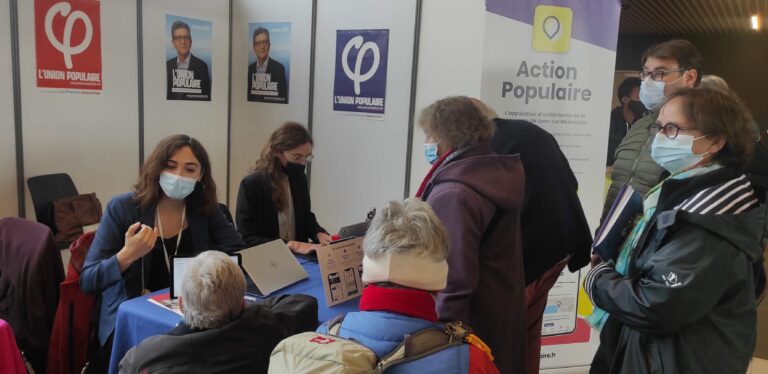
Thank you for all your input on your journey as a designer and activist in LGBTQI+ fights and in politics. I hope that our readers can benefit from your story and realise that we have a lot to learn from the field, and that it can lead to fulfilling careers as design activists.
Vous pouvez également regarder cette conférence de “Les Faiseuses du Web” avec Agathe Mametz:
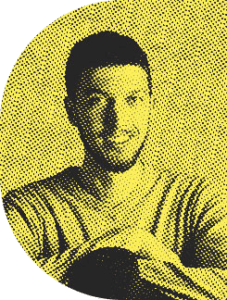
Cédric Fettouche
Cédric Fettouche works as a design strategist for the European Commission on the New European Bauhaus Initiative.
After three years of humanitarian experience in Greece and Central Mediterranean, he founded the NGO Humanitarian Designers (HD) in 2021 to bridge the gap between the design and humanitarian sectors.
Passionate about design and societal challenges, he strives to experiment his committed vision into new sectors, and share his learnings back to the design communities. You can contact him on Linkedin or on the HD Slack.
